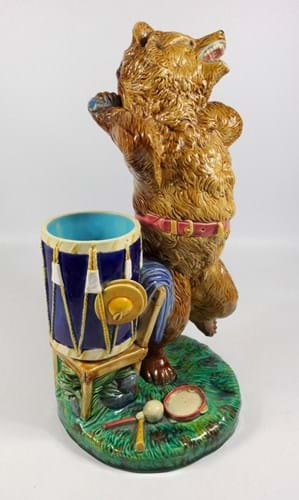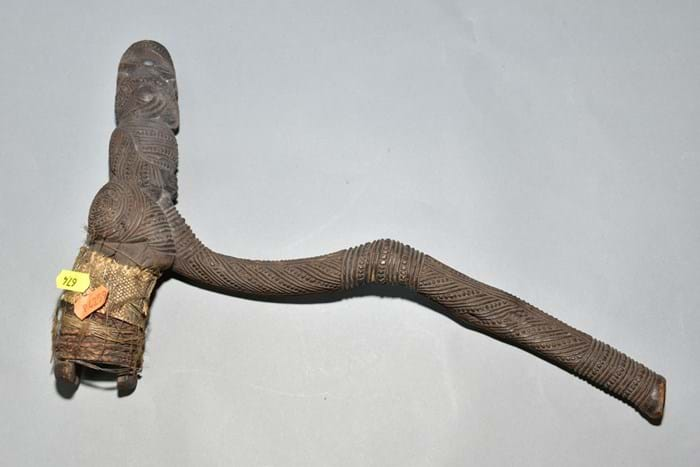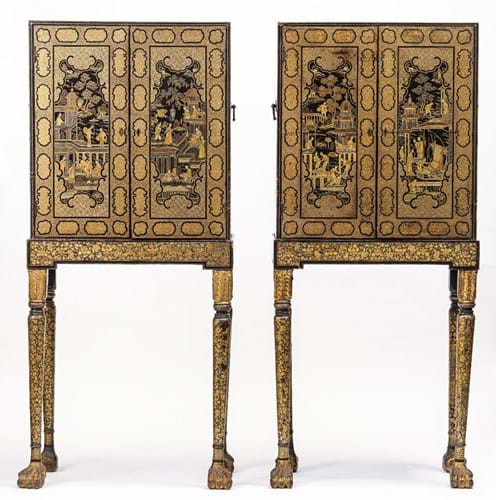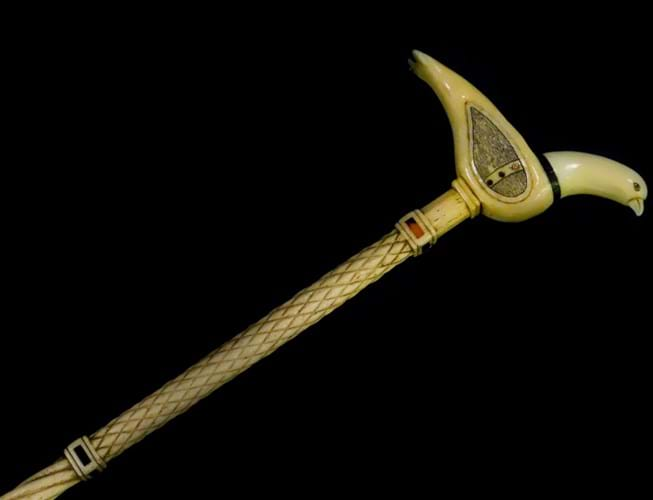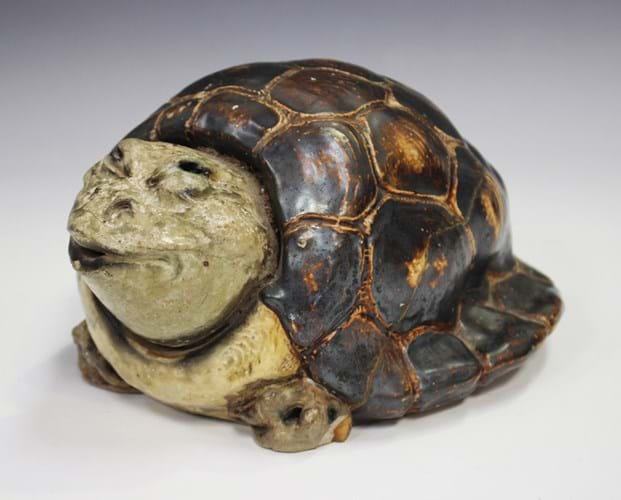1. Minton majolica bear – £2400
This Minton majolica figure of a 12in (30cm) dancing bear playing a drum kit carries a patent lozenge for May 1876. This particular example, offered by Youngs in Farnham on August 15, was not in the best condition – the ends of the baton the bear holds behind its back were missing while the jaw had been broken and reglued – but it is a scarce model.
It had been shown to David Battie at a BBC’s Antiques Roadshow back in 1989 and filmed for an episode. More recently another example had sold for $2800 at Heritage Auctions in 2012.
This Surrey one took £2400 (estimate £400-600).
2. Maori adze handle – £4000
This good example of Maori art surfaced at Richard Winterton in Lichfield on August 17. The 16in (40cm) adze handle of the type that may once have housed a carved greenstone blade was foremost among a group of five Oceanic objects on offer.
It sold at £4000 against an estimate of £300-400.
Together the five objects made a toki poutangata – a ceremonial tool used on occasions such as the felling of a great tree for a canoe or the ridgepole of a meeting house. While the blades were typically treated as tribal heirlooms, the wooden handles were often refashioned when a new chief was chosen.
This example, probably 19th century, was typically carved with a stylised human figure.
3. Chinese export lacquer cabinets on stands – £32,500
This pair of Chinese export black lacquer chinoiserie decorated cabinets on stands came for sale at Bellmans in Wisborough Green, West Sussex on August 11 with a blue-chip provenance.
On the market for the first time, they had been acquired prior to 1830 by Captain Richard Alsager (1781-1841) of the British East India Company and had then come by descent.
Textbook productions of the early 19th century that combine a popular Western form with sumptuous lacquer decoration, they sold for £32,500 (estimate £5000-10,000).
4. Scrimshaw walking cane – £3600
This sailor’s walking cane displays many elements of the scrimshander’s art – a whalebone shaft carved with spiral fluting, collars inlaid with shell from the hawksbill turtle and a handle carved as a dove from the tooth of a sperm whale.
It was probably made in the first half of the 19th century by either a British or a North American sailor (similar canes with bird handles are associated with East Coast US carvers).
Offered for sale at Bourne, Lincolnshire firm Golding Young & Mawer on August 12, it found a buyer via thesaleroom.com at £3600 (estimate £250-300). The auctioneers had sold another bird-handled scrimshaw cane of a less sophisticated form for £1900 in 2018.
5. Martin Brothers tortoise – £17,000
This Martin Brothers stoneware model of a tortoise with a mirthful facial expression was a very welcome discovery for auctioneer Rupert Toovey on a post-lockdown valuation in the Surrey Hills.
“Just a few weeks ago, in the sitting room of a Cranleigh cottage, my eye was caught by the tortoise sitting nonchalantly on a tile hearth. As I made my way excitedly towards it, the family, surprised at my interest, recounted how their mother had rescued it from the garden decades before.”
Despite their obvious potential for the Martin Brothers treatment, tortoises are surprisingly rare in the Robert Wallace oeuvre. Alongside the series of small inkwells (some of them made later by Clement Martin), just a handful of larger testudine models are known including the fabulous chap pictured in Malcolm Haslam’s book on the subject and a bed-warmer dated to 1880 sold for £38,000 at Bonhams in 2012.
This recent find, signed and dated to the base for March 1904, measured almost 10in (25cm) in length. Toovey described its qualities: “The face has a human quality and a mischievous grin. Its shell is beautifully conceived, modelled and glazed. The poor thing has some wear [several cracks and repairs] – signs of its life in the garden and beside the fire – but it is a rare and large example.”
Emerging from decades of hibernation, it found no shortage of admirers at a £1500-2500 estimate. It sold for £17,000 at Toovey’s in Washington, West Sussex on August 13.


